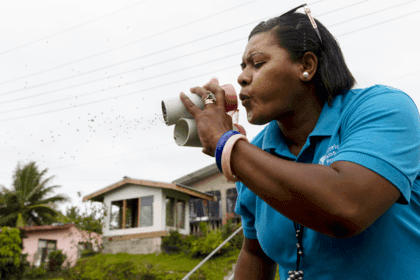
In charts: how science is combatting infectious disease
Science has found the tools to combat many of the most destructive infectious diseases of the last century. But more work is needed. Effective research and coordinated action stop outbreaks spiralling into global health emergencies.
We look back at infectious disease outbreaks since 1840, and at how science has delivered the tools needed to combat them.
Why we need to control outbreaks quickly
Various, including BBC News, Centers for Disease Control and Prevention, Joint United Nations Programme on HIV/AIDS, National Center for Biotechnology Information, New World Encyclopedia, Nigeria Centre for Disease Control, The British Medical Journal, The Free Press Journal, The Lancet, World Health Organization.
Notes: Outbreaks have been included if they meet the following criteria: resulted in more than 100 deaths; geographically widespread, ie a pandemic or a major epidemic within a country. It has not been possible to show all outbreaks that meet the criteria as not all death tolls could be confirmed, e.g. for the sixth and seventh cholera pandemics. For the purposes of this visualisation, all HIV/AIDS cases since 1981 have been considered as part of one sustained epidemic. Data as of 25 August 2021.
We’ve done more to overcome the threat posed by infectious diseases in the past century than during the rest of history. With a few key exceptions, the time an outbreak, epidemic or pandemic lasts, and the number of deaths caused by each disease appears to have decreased over time. What has helped limit the impact of infectious diseases?
Life-saving inventions made since 1920
The widespread availability of antibiotics allows us to manage most bacterial infections.
As a result of innovations in the past 35 years, HIV remains a serious condition, but if you have access to antiretroviral therapies it isn’t usually a life-threatening one.
And in the past decade, we have seen huge leaps in vaccine technology, with the first RNA vaccines – which hold the promise of being faster, cheaper, more adaptable and easier to mass-produce – being approved for use to combat Covid-19.
Vaccines help eliminate infectious diseases
Centers for Disease Control and Prevention, World Health Organization.
Notes: Ebola cases for 2018 and 2019 are logged against 2018. Cases are logged as 0 when the disease was known but there were no cases. No data logged for years when the disease was not yet known, or the data is not yet available. Data as of 25 August 2021.
Vaccines are one of our greatest success stories – they save countless lives every year. Thanks in large part to vaccines, child deaths have decreased by more than 50% in the past 30 years.
But vaccination rates for many diseases have been stalling. This is what we’re currently seeing with measles, where the stagnation of vaccination rates has led to an increase in cases.
We know that vaccines work, we just need to make sure that we have the infrastructure in place so that everyone can benefit from them.
The fight so far against these deadly diseases
Centers for Disease Control and Prevention, Joint United Nations Programme on HIV/AIDS, World Health Organization, HIV.gov, National Institute of Allergy and Infectious Diseases.
Notes: Ebola cases and deaths for 2018 and 2019 are logged against 2018. Data as of 25 August 2021.
Vaccines alone won’t stop infectious diseases.
And antibiotics are not as effective as they used to be. Today, drug-resistant infections are a serious threat to people’s health.
Too often the global response to disease outbreaks is reactive, rather than preventative, meaning we’re fighting the fire rather than the cause of the fire.
To truly help stop epidemics, we need to support countries and communities by using the tools and knowledge we have now to detect new outbreaks rapidly, through a combination of a well-trained healthcare workforce with knowledge of the symptoms to identify, and the laboratory facilities to confirm the presence of the virus.
While science has provided us with the tools to combat many infectious diseases, important gaps remain.
Governments must commit to increased and sustained funding on a global and national scale to support research, and ensure that preparedness is at the heart of our response to infectious disease.
We’re funding research to better understand what causes and drives infectious diseases to escalate and the solutions to control their impact.
There are currently no open funding opportunities for Infectious Disease. Learn more about the funding we provide.

